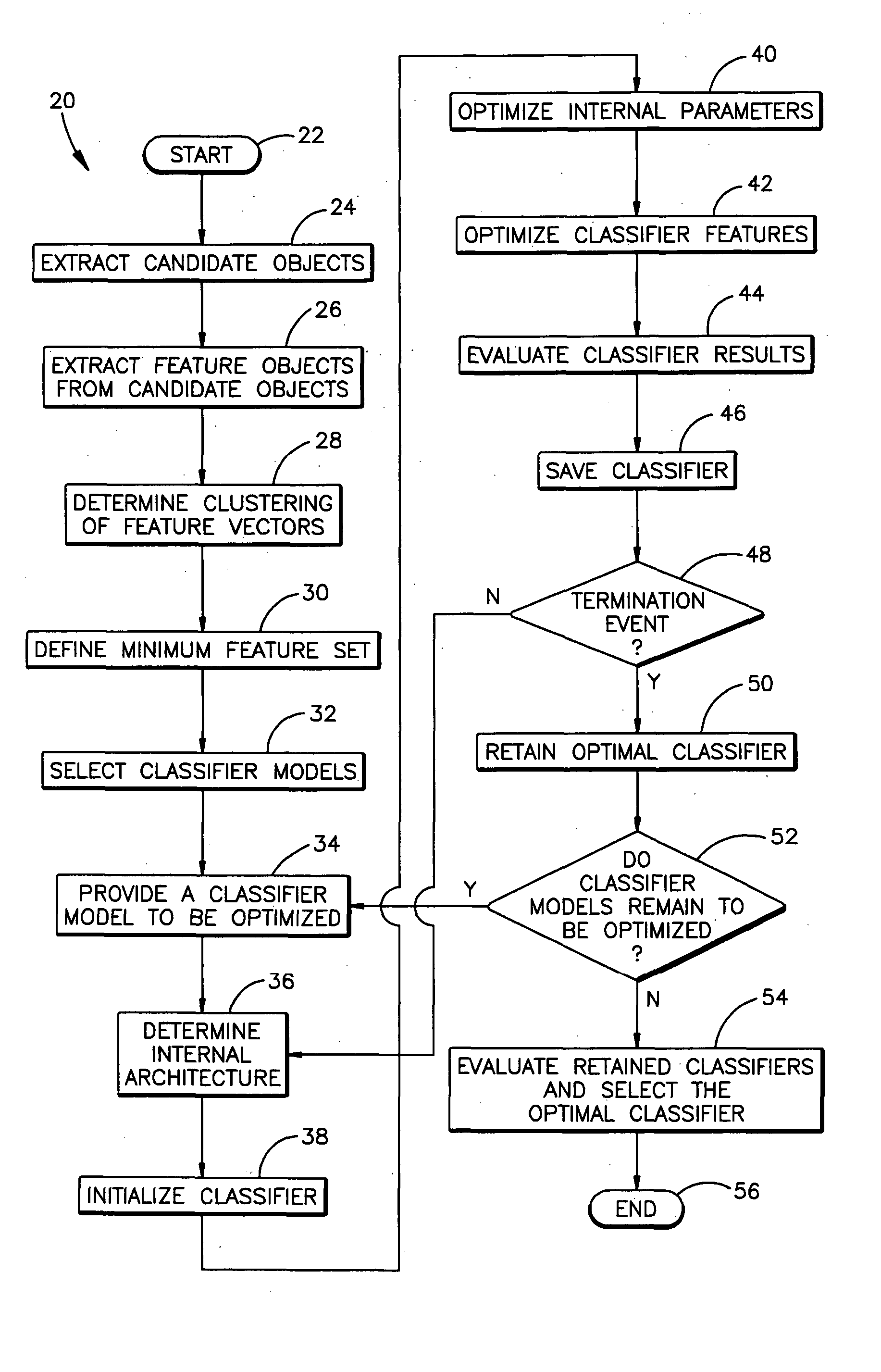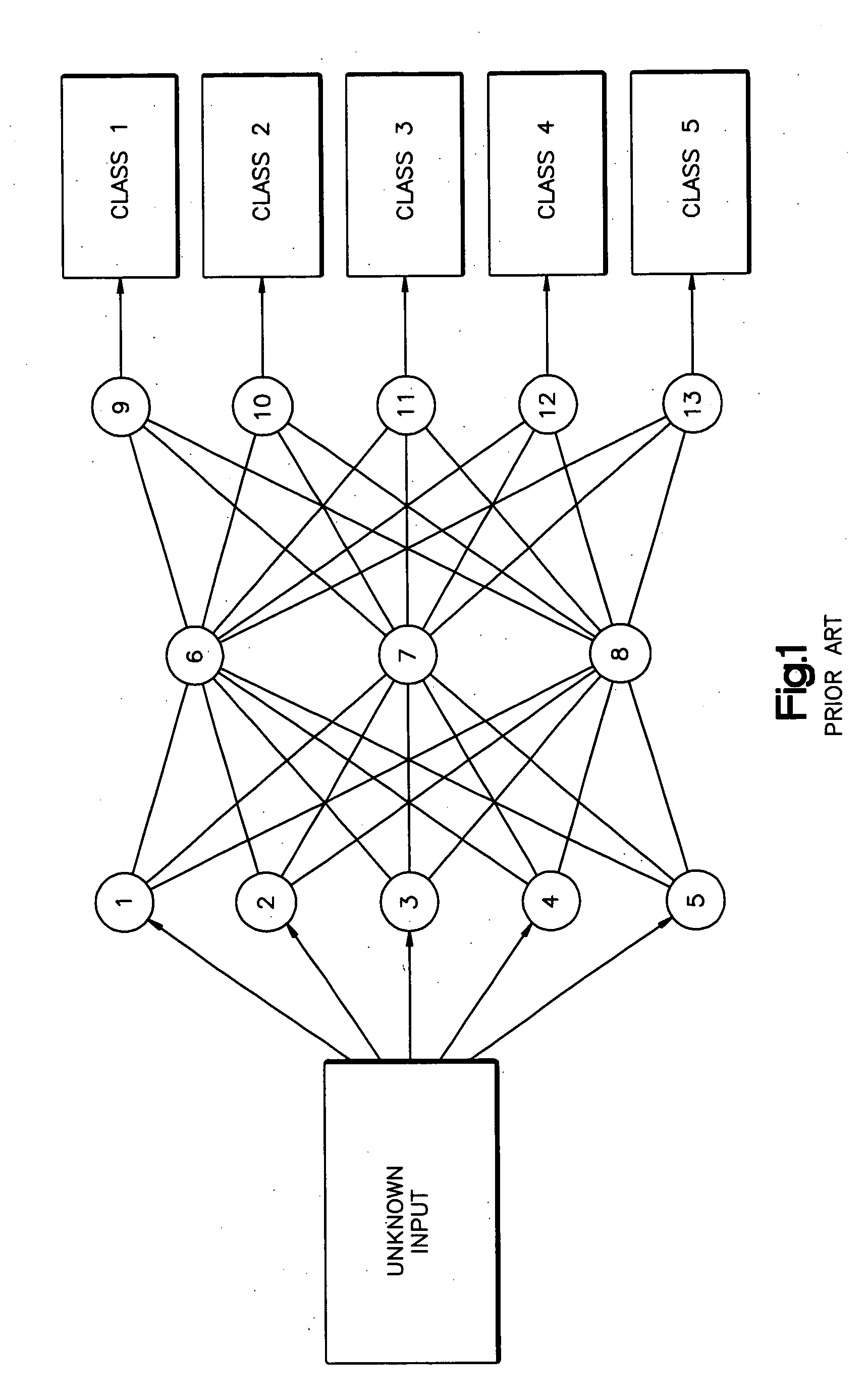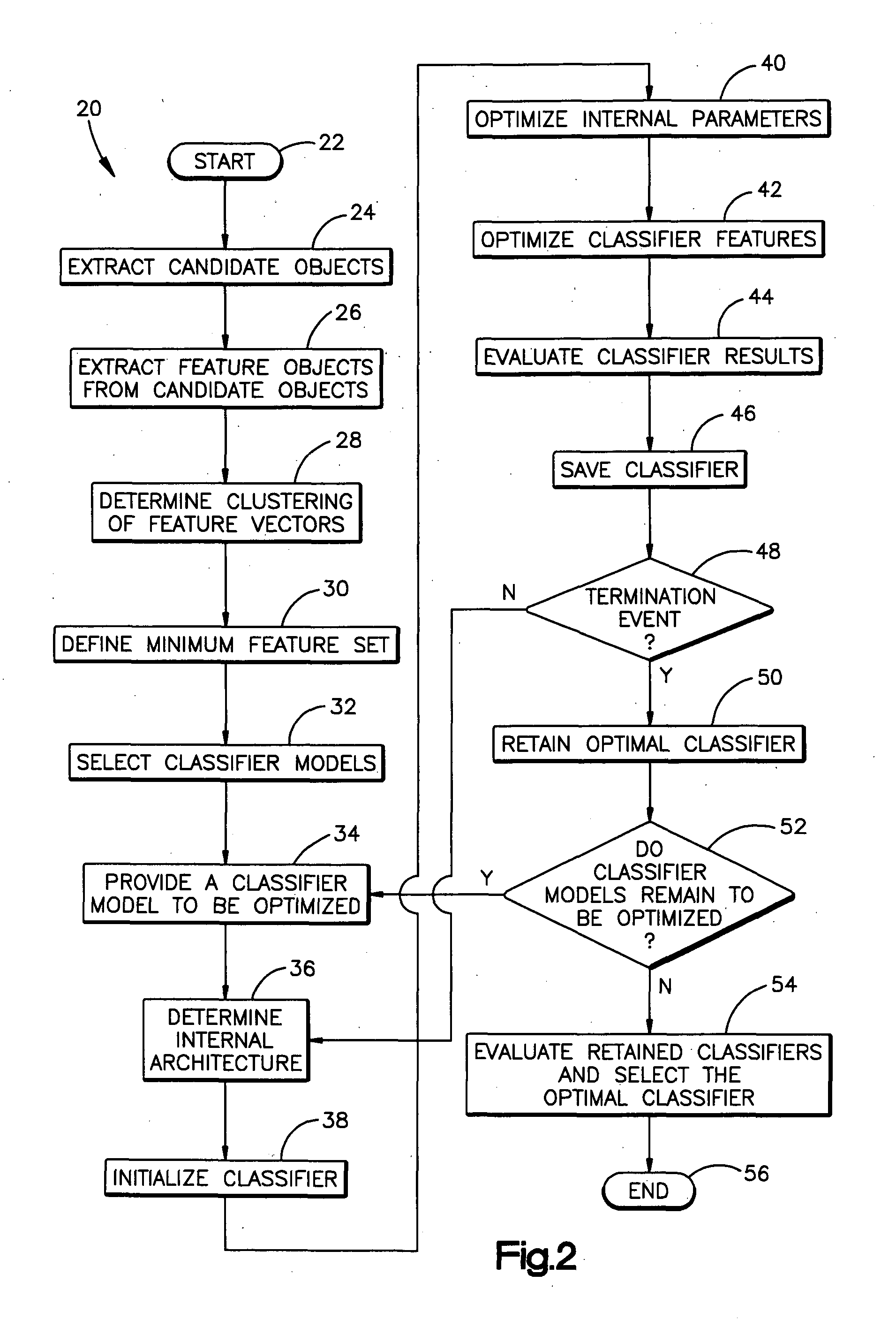Self-optimizing classifier
- Summary
- Abstract
- Description
- Claims
- Application Information
AI Technical Summary
Benefits of technology
Problems solved by technology
Method used
Image
Examples
Embodiment Construction
[0019] In accordance with the present invention, a self-optimizing pattern recognition classification system that optimizes to a specific set of training samples is described. The classifier can be used in any traditional pattern recognition classifier task, including, for example, optical character recognition (OCR), speech translation, and image analysis in medical, military, and industrial applications.
[0020] It should be noted that the present invention, as one embodiment, can be implemented as a computer program. Therefore, the structures described herein can be considered to refer to individual modules and tasks within these programs. Portions of the present invention are intended to emulate the function of a neural network. Accordingly, understanding of the present invention will be facilitated by an understanding of the operation and structure of a neural network.
[0021]FIG. 1 illustrates a neural network that might be used in a pattern recognition task. The illustrated neu...
PUM
 Login to View More
Login to View More Abstract
Description
Claims
Application Information
 Login to View More
Login to View More - R&D
- Intellectual Property
- Life Sciences
- Materials
- Tech Scout
- Unparalleled Data Quality
- Higher Quality Content
- 60% Fewer Hallucinations
Browse by: Latest US Patents, China's latest patents, Technical Efficacy Thesaurus, Application Domain, Technology Topic, Popular Technical Reports.
© 2025 PatSnap. All rights reserved.Legal|Privacy policy|Modern Slavery Act Transparency Statement|Sitemap|About US| Contact US: help@patsnap.com



